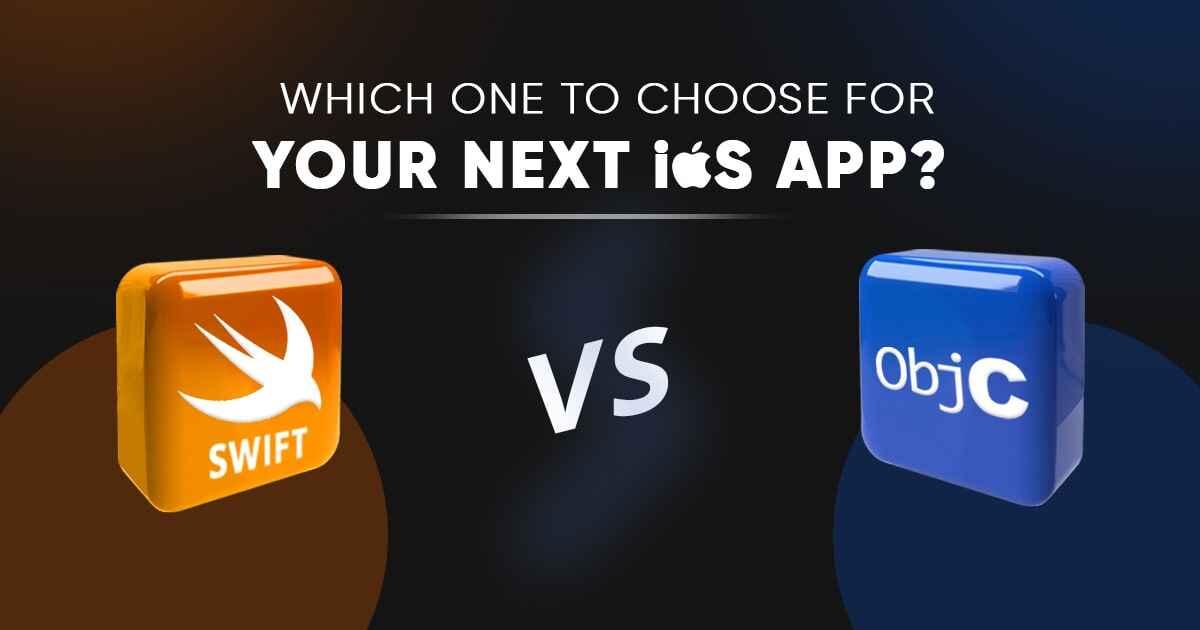Swift vs Objective C: which is best to develop iOS apps in 2024?

The choice between Swift and Objective-C is a pivotal decision for developers venturing into iOS app development. As the two primary languages used for creating iOS apps, each comes with its own set of advantages and challenges. The ongoing debate emphasizes the importance of selecting the right programming language to ensure project success and future scalability.
The landscape of iOS app development has been predominantly shaped by two programming languages: Objective-C and Swift. Each has played a pivotal role in the development of countless mobile applications, with histories and motivations that have significantly influenced their design and adoption.
Objective-C was conceived in the early 1980s, born out of the desire to add object-oriented capabilities to the C programming language. Its creation by Brad Cox and Tom Love introduced a powerful tool for software developers, combining the efficiency of C with the flexibility of Smalltalk-like messaging. Objective-C became the cornerstone of Apple's software development after it was adopted for the NeXT operating system in the late 1980s. This pivotal decision cemented Objective-C's place in the development of macOS and, subsequently, iOS applications. For decades, it dominated Apple's ecosystem, praised for its maturity and robustness, which supported the creation of complex and large-scale applications.
Despite Objective-C's strengths, its age began to show, particularly in comparison with more modern programming languages. Recognizing the need for a more accessible, safe, and efficient language, Apple introduced Swift in 2014. Swift was designed to address the shortcomings of Objective-C, providing developers with a language that was both powerful and easy to learn. Its introduction was motivated by several key goals:
Since its introduction, Swift has seen rapid evolution and adoption, with Apple and the developer community actively contributing to its development. Swift's open-source nature, unveiled in 2015, further accelerated its growth and acceptance, making it a popular choice not only for iOS and macOS development but also for server-side applications and even potential uses in embedded systems.
|
Features |
Objective-C |
Swift |
|
Introduction Year |
Early 1980s |
2014 |
|
Syntax |
Complex and verbose |
Concise, modern, and more readable |
|
Performance |
Stable performance, optimized over years |
Generally offers faster execution times |
|
Memory Management |
Manual Reference Counting (MRC) & Automatic Reference Counting (ARC) |
Primarily ARC, simplifying memory management |
|
Type Safety |
Less strict, more prone to runtime errors |
Strong type system, reducing errors |
|
Developer Productivity |
Lower due to verbose syntax and manual memory management |
Higher, thanks to concise syntax and improved safety features |
|
Community and Support |
Established but gradually declining |
Vibrant and rapidly growing, with strong support from Apple |
|
Compatibility |
Direct interoperability with C and C++ |
Interoperable with Objective-C; some limitations with C/C++ |
|
Learning Curve |
Higher, due to older syntax and manual memory management |
Lower, designed to be easy to learn for beginners |
|
Security |
Older architecture, known vulnerabilities |
Designed with modern security practices in mind |
|
Cross-platform Development |
Limited primarily to Apple platforms |
Expanding through initiatives like Swift for TensorFlow and server-side Swift |
|
UI Frameworks |
UIKit, with support for newer frameworks like SwiftUI through bridging |
UIKit and first-class support for SwiftUI |
|
Future Outlook |
Stable, primarily for maintaining existing applications |
Bright, with continuous updates and expanding applications beyond iOS |
Also Read: Develop your First Full Stack Application with Django
Swift is the recommended choice for most new iOS app development projects due to its modern syntax, safety features, and overall developer preference. Apple's strong support for Swift, including frequent updates and enhancements, ensures that applications built with Swift are optimized for performance, security, and future iOS features. Swift's easier learning curve and enhanced developer productivity make it an ideal choice for startups and new projects aiming to leverage the latest in Apple technology.
Despite Swift's advantages, there are scenarios where Objective-C might still be the preferable option:
In 2024, the choice between Swift and Objective-C will largely depend on the specifics of the app project. Swift’s modern features, ease of use, and strong backing from Apple make it the preferred choice for new projects. However, Objective-C remains relevant for specific scenarios, particularly in maintaining existing applications or when deep integration with C-based libraries is necessary.
1. Is Swift faster than Objective-C in terms of app performance?
Swift generally offers better performance due to its optimized compiler and language features, though specific cases may vary.
2. Which language offers better type safety and error handling?
Swift has a stronger type system and better error-handling capabilities, reducing runtime errors.
3. Can Swift and Objective-C code be used within the same project?
Yes, Swift and Objective-C code can coexist in the same project, allowing for gradual migration or interoperability.
4. Which language has more community support and resources available?
Swift has a rapidly growing community and extensive resources available, partly due to strong support from Apple and its modern features attracting new developers.
5. Which UI frameworks are supported by Swift and Objective-C?
Both languages support UIKit for iOS development. Swift also supports SwiftUI, Apple’s newest framework for UI development, encouraging its adoption.

For modern telecom enterprises, delivering exceptional QoS is no longer optional—it’s a brand differentiator and a strategic lever for growth. Static provisioning models won’t cut it in a world of hyper-dynamic data usage.